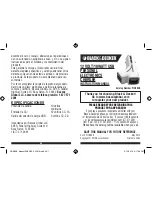
Caution!
W hen driving down long and steep
grades, relieve the load on the
brakes by shifting into “4 ”, “3” , “2 ”
or “ 1” . T his helps prevent
overheating of the brakes and
reduces brake pad wear.
After hard braking, it is advisable to
drive on fo r som e tim e, rather than
im m ediately parking, so the air
stream will cool down the brakes
faster.
Tires
Tread w ear indicators (TW I) are
required by law. These indicators
are located in six places on the
tread circum ference and becom e
visible at a tread depth of approxi
m ately 1/ 16 in (1.5 mm), at which
point the tire is considered worn
and should be replaced.
The tread w ear indicator appears
as a solid band across the tread.
W arning!
Do not allow your tires to w ear
down too far. As tread depth
approaches 1/ 16 in (1.5 mm),
the adhesion properties on a
w et road are sharply reduced.
Depending upon the w eather
and/or road surface (condi
tions), the tire traction varies
w idely.
Specified tire pressures m ust be
m aintained. T his applies parti
cularly if the tires are subjected to
high loads (e.g. high speeds,
heavy loads, high am bient
tem peratures).
W arning!
Do not drive w ith a flat tire. A
flat tire affects the ability to
steer or brake the vehicle. You
may lose control of the car.
C ontinued driving w ith a flat
tire o r driving at high speed
w ith a flat tire will cause ex
cessive heat build-up and
possibly a fire.
A quaplaning
Depending on the depth of the
w ater layer on the road, aqua
planing m ay occur, even at low
speeds and with new tires. Reduce
vehicle speed, avoid track grooves
in the road and apply brakes
cautiously in the rain.
18
Summary of Contents for C 230 1998
Page 1: ......
Page 3: ...Mercedes Benz Owner s Manual C 230 C 280 ...
Page 13: ...Instruments and C ontrols ...
Page 104: ......
Page 156: ......
Page 157: ...Index ...
Page 164: ...202 584 7 3 9 6 Order No 6515 0029 1 3 USA Edition A 1998 ...
Page 165: ......















































